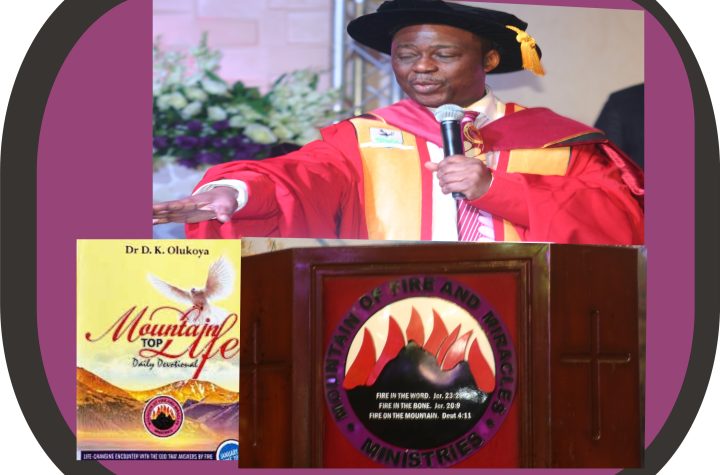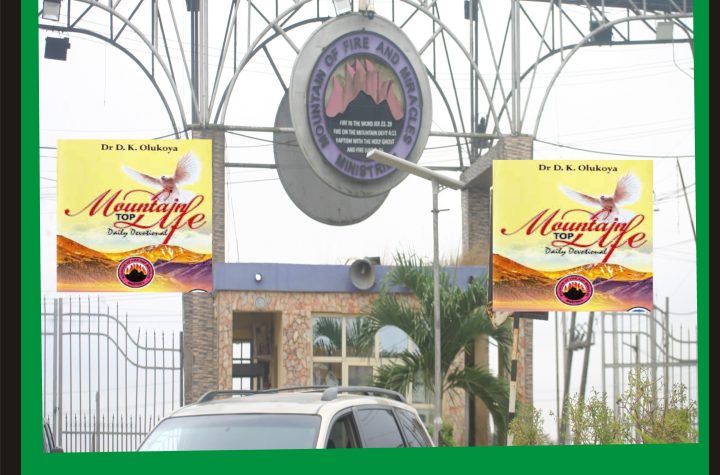
By Olaotan Fawehinmi
“But a person whose good deeds exceed his wisdom is likened to a tree whose branches are few but whose roots are numerous. Even if all the winds of the world were to come and blow against it, they could not budge it from its place.” – Avot 3:22.
Metaphors, with their ability to inspire creativity and depth of perception, often lead us to ponder profound connections between seemingly disparate entities. Consider the analogy of a person to a tree, as suggested by the wisdom in Avot 3:22. There are intricate parallels between the growth and development of a tree and the multifaceted journey of human life.
When we liken man to a tree, a quality such as “regeneration,” for example, swiftly comes to mind. As a tree regenerates and the wind conveys its seeds to far distances, man extends over generations and sometimes his offspring are carried and established in faraway lands, taking root in diverse nooks and crannies of t5he world.

The same proper cultivation required to guide the positive and productive development of a tree is needed by a parent/guardian as proper discipline/training to shape a child. As always said, ‘training is a skill,’ that is best acquired through a series of corrections made out of love and best imparted through the same. Just like trees, children left to grow on their own accord often grow wildly but discipline/training is NOT the awful subduing torture many parents/guardians often mistake it to be.
The three fundamental purposes expected of a tree to protect its environment from the angry storm, provide shade from the scorching sun with its long and drooping overhanging branches and leaves, and provide food for the hungry man with its fruits, can, in the same manner, represent the activities of a man who has set himself apart to protect and provide for the world around him.
Another quality that puts man and a tree at par, is coexistence. As “a tree cannot make a forest,” men are bound together by social groups containing their peculiarities, living together, and sharing territories. Which, in some cases, is misinterpreted by foreigners, especially when such groups are inaccessible to them.
Both man and the tree have survival needs. They both require the same four basic elements to survive – soil (earth), water, air, and fire (heat). A tree absorbs its nutrients from the soil (earth) and finds a home for its roots there. A man’s firm foundation is his background and even when he appears successful on the outside, if there is no link to his home and heritage, he may fail to withstand the wind of life’s unbearable challenges. A man without a source is liable to drifts and rages that may welcome misery and eradication. But a well-rooted tree cannot shift from its place, even when the winds blow against it; just like every man needs a supportive home base for a solid growth environment.
Water prevents man and the tree from dehydration – the excessive loss of body water, with an accompanying disruption of metabolic processes.
They both need water to relieve thirst caused by a reduction in fluid volume. After rain, snow and ice have eventually made it into the water table, a man digs wells to get water and roots reach into the soil to absorb it to the rest of the tree. Dehydration occurs when water loss exceeds water intake and can lead to death.
Man lives by his breath, and he needs air to breathe, the same way a tree needs air to live. Man breathes oxygen in and carbon dioxide out, while a tree needs the same for respiration and photosynthesis respectively. No man nor tree can survive an imbalanced air, they would both suffocate and die.
Heat, as the fourth basic requirement for living things to keep living, is majorly derived from the sun. A tree absorbs energy to activate the process of photosynthesis, an essential chemical reaction for its health and development. Just as man needs heat to keep warm and make his food. The enzymatic reactions in his body only work at an optimum temperature, otherwise, he would die of hypothermia – the condition of having an abnormally (and dangerously) low body temperature or hyperthermia – which occurs when the thermoregulation of the body fails, resulting in the production or absorption of more heat than it dissipates.
The adequate application of these requirements sees the germination system of tiny seedlings into complete fruit-producing trees, and this inspires man’s transformation from birth to adulthood, especially when the three similar stages involved in both are considered. First, the tree’s root system grows from a seed (or seeds) sown into the ground, like a man and a woman come together to make a child.
Thereafter, the trunk, branches and leaves grow; as that child grows from childhood to adolescence, to youth and finally to adulthood. Then the time comes when the tree bears fruit, like one who was once a child becomes a man and begins to have his children. Every man, like every tree, has his fruits latent in him from conception, but they never come out until he matures.
A tree hides its roots in the ground and derives its main life force from them. Though the leaves also nurture it by absorbing sunlight, but before the leaves came, the roots have been its mainstay; providing firm embedding into the earth to withstand strong wind gusts or other forces seeking to uproot the tree. Like a river disconnected from its source would dry up, cut off a tree from its roots, and it gradually withers till it eventually dies. A man’s root is his background i.e., his family, whether biological – where, how and by whom he was born, which is the wellspring of his existence, or spiritual – a group of people that share the same faith.
A weak root system can have dire consequences even on an otherwise mentally well-developed individual, but one with viable roots must not be inclined to rest on his laurels. He must build his legacy on the inheritance made available to him.
In reality, a man can never be satisfied with a good background only, like a tree with laid down roots that never developed a trunk, branches, leaves and fruits. Such is no tree if it only has roots but nothing else. With healthy roots, a man must have the full complement of trunk, branches, leaves, and so on. A Yoruba adage translates: “a good upbringing is priceless; to be birthed is not as crucial as a rebirth.” A man should predominantly grow in the composed moral and intellectual capitals that dictate his deeds.
A tree’s trunk and body, including the leaves, constitute most of its actual mass, like a man’s life depends mostly on his walk from childhood through adolescence, youth, up to adulthood. The trunk may be used to ascertain its age, especially from its annual rings, like the quality of a man’s life can be measured by the values he picked up at these times of his life. They comprise the vast mainstream of his activities.
The body of a tree generally in a constant state of growth, witnessed by thicker trunk and boughs, additional leaves, and so on, is a replica of the perpetual development of a man’s moral and intellectual capitals over some time.
Indeed, one can tell a man’s “stuff” by measuring his deeds from childhood to adulthood – how many years he has spent pursuing knowledge and substantive conduct.
The physical predominance of a tree attains completion only when it bears fruits. This is even true to a greater degree when the seeds contained within each fruit serve as the forebear for future trees in coming generations. When a man who was once a child, has his child(ren) and all he has learnt over the years, he begins to input into them.
As impressive as all these characteristics are, a tree cannot take its fruits to man by itself, but man can come to a tree to pluck and eat its fruit. A man attains his state of wholeness only when he bears an endless yield of fruits across areas of his life that others come to benefit from–biological, career, spiritual, and so on, affecting his family, friends and neighbours so that they can, through him, fulfil their purpose.
The quality of a man is known by the fruits he bears, and no one can find grapes in thorn bushes or thistles with figs. So, if a man will indeed be considered “successful”, according to Zig Ziglar, he must have a balance of success stories across the many areas of life, not when his business life blooms and his home life is in shambles.
In the succeeding chapters, you will discover the tested facts of an ideal, successful, and beautiful life and all the foundational constituents of the essential fabric of human fulfilment that such life derives through different phases. I have taken THE TREE as an allegory of Man, to describe how it typifies him in all ramifications.
The fact that “Parenting” is the root of man epitomises the saying that “every person, more or less, behaves their background. Then the seeds sowed in childhood inform the trunk of his days as a youth, until adulthood when the fruits he bears reflect him as the cumulative result of all he had been through over the years.
This book is to develop you to become all that you are supposed to become, to be a vital contributor to life.
Olaotan Fawehinmi, a seasoned public relations and integrated brand communications professional, writes from Lagos, Nigeria.













More Stories
Candidate must 18 years before admission into Nigerian universities-FG
Why we declared 7-day warning strike- NASU, SSANU
Lenin Centenary: Wherever ideas lead us, we follow